display NISSAN GT-R 2021 Owner's Manual
[x] Cancel search | Manufacturer: NISSAN, Model Year: 2021, Model line: GT-R, Model: NISSAN GT-R 2021Pages: 1808, PDF Size: 4.88 MB
Page 138 of 1808

NOTICE
Make sure the tire valve stem cap is
installed and that the valve stem is
tight. When installing the cap, make
sure to tighten the cap by hand. If a
tool is used to tighten the cap, the
cap may be damaged.TIRE PRESSURE
Tire Pressure Monitoring System
(TPMS)This vehicle is equipped with the Tire
Pressure Monitoring System (TPMS). It
monitors tire pressure of all tires. When
the low tire pressure warning light is lit,
one or more of your tires is significantly
under-inflated. The system also displays
pressure of all tires on the touch screen
display by sending a signal from a sensor
that is installed in each wheel.
The TPMS will activate only when the
vehicle is driven at speeds above 16 MPH
(25 km/h). Also, this system may not
detect a sudden drop in tire pressure.
(
“Low tire pressure warning light”
page 2-30) (
“Tire Pressure Monitoring
System (TPMS)” page 5-4) (
“Flat tire”
page 6-3)
Tire inflation pressure
Check the tire pressure often and
always prior to long distance trips.
The recommended tire pressure
specifications are shown on the F.
M.V.S.S./C.M.V.S.S. label or the Tire
and Loading Information label (if so
equipped) under the “Cold Tire
Pressure” heading. The Tire and
Loading Information label is affixed
to the driver side door end. Tire
pressures should be checked reg-
ularly because:.
Most tires naturally lose air over
time.
.
Tires can lose air suddenly when
driven over potholes or other
objects or if the vehicle strikes
a curb while parking.
NOTE:
. You can check the pressure of all
four tires on the touch screen dis-
play. See the separate Multi Func-
tion Display Owner’s Manual.
. The tires of this vehicle are filled
with nitrogen gas. When the tire
pressure is low, fill the tires with nitrogen. It is recommended you
contact a GT-R certified NISSAN
dealer for information on filling the
tires with nitrogen.
. If nitrogen is not available, com-
pressed air may be safely used
under normal driving conditions.
However, NISSAN recommends re-
filling with nitrogen for maximum
tire performance.
The tire pressures should be
checked when the tires are cold.
The tires are considered COLD after
the vehicle has been parked for 3 or
more hours, or driven less than 1
mile (1.6 km) at moderate speeds.
Incorrect tire pressure, including
under inflation, may adversely
affect tire life and vehicle hand-
ling.
WARNING
.
Improperly inflated tires can
fail suddenly and cause an
accident.
.
The Gross Vehicle Weight
rating (GVWR) is located on
Page 145 of 1808
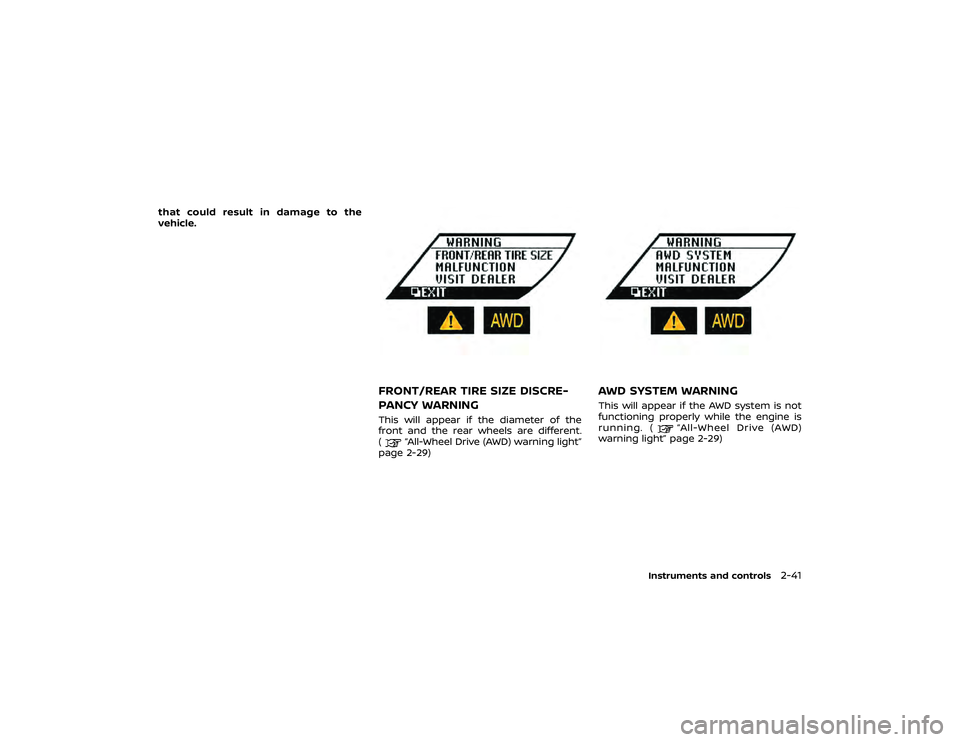
ways use run-flat tires of the specified
size on all four wheels. Mixing tire sizes or
construction may reduce vehicle handling
stability. If necessary, contact a GT-R
certified NISSAN dealer for assistance.
Frequently check the tire pressure infor-
mation on the touch screen display and
adjust pressure of each tire properly. See
the separate Multi Function Display Own-
er’s Manual.
It can be difficult to tell if a run-flat tire is
under-inflated or flat. Check the tire
pressures as described earlier in this
section. If the tire becomes under-inflated
while driving, the low tire pressure warn-
ing light will come on. If the tire becomes
flat while driving, the low tire pressure
warning light and the run-flat tire warn-
ing display will come on.
Low tire pressure:
NOTICE
.Never install tire chains on a
punctured run-flat tire, as this
could damage your vehicle.
. Avoid driving over any projection
or pothole, as the clearance be-
tween the vehicle and the ground
is smaller than normal.
. Do not enter an automated car
wash with a punctured run-flat
tire.
. It is recommended you have the
punctured tire replaced by a GT-R
certified NISSAN dealer as soon
Do-it-yourself
8-37
Page 162 of 1808

GT-R Overview
GTR
Illustrated table of contents
0
Safety — Seats, seat belts and supplemental restraint
systemInstruments and controlsPre-driving checks and adjustmentsDisplay screen, heater, air conditioner and audio systemsStarting and drivingIn case of emergencyAppearance and careDo-it-yourselfMaintenance and schedules
123456789
Technical and consumer information
10
Index
11
Page 176 of 1808
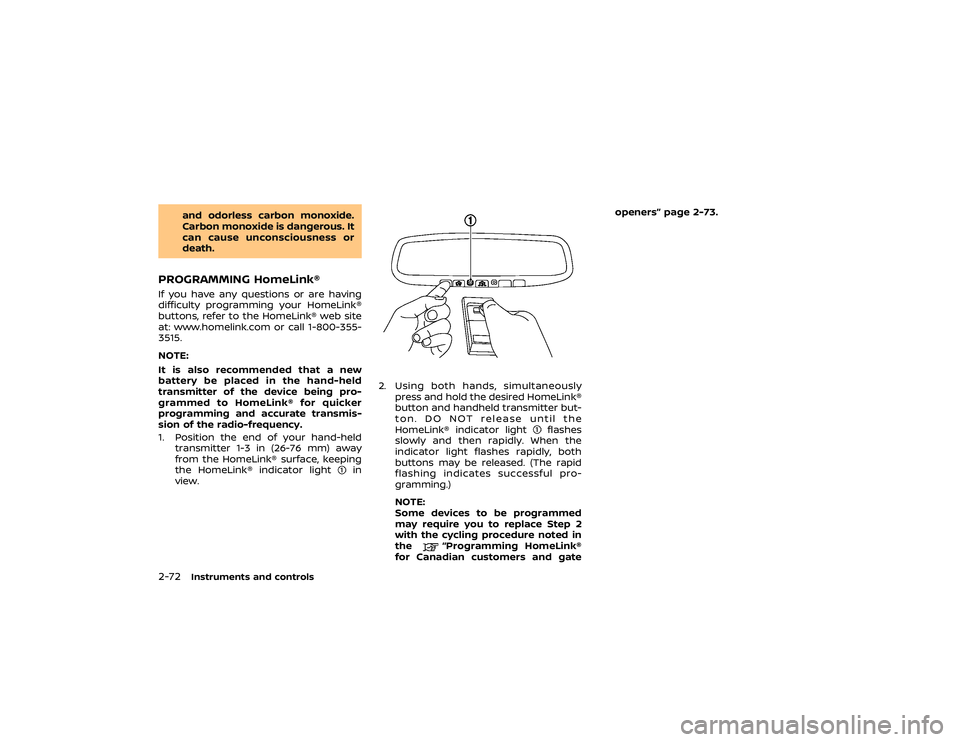
position.
. Transmission oil temperature is 284°F
(140°C) or higher:
If the transmission oil temperature
increases to over 284°F (140°C), the
color of the meter display changes to
red. However, the vehicle can continue
to be driven until the temperature
reaches 295°F (146°C). If the oil tem-
perature exceeds 284°F (140°C) while
driving (the color of the meter dis-
played in red), change both the trans-
mission oil and the differential oil after
driving because these fluids have
deteriorated because of the heat.
GT-R Overview
GTR-13
ADDITIONAL MAINTENANCE ITEMS
Page 188 of 1808

WARNING
Do not attempt to top off the fuel
tank after the fuel pump nozzle
shuts off automatically. Continued
refueling may cause fuel overflow,
resulting in fuel spray and possibly a
fire. The fuel tank is full at the first
automatic shutoff.
To maximize vehicle performance, the
fuel tank is located as low as possible to
lower the vehicle center of gravity. The
tank is also divided into two parts. This
fuel tank design causes higher pressures
inside the tank than other vehicles so fuel
spillage is possible by trying to top off the
fuel tank after automatic shutoff.
The fuel tank pressure is higher when the
vehicle is hot, especially if the tank is more
than half full. If the cap is opened when
the vehicle is hot, it may cause fuel spray
and there may be a hissing noise. Open
the cap slowly, releasing the pressure
from the tank gradually. Also, if the
vehicle is refueled when the vehicle is
hot, the fuel pump may automatically
shut off before the tank is full. This does
not indicate that there is a malfunction. Refuel slowly or refuel after the vehicle
has cooled.
GASOLINE SMELLThe fuel temperature is higher when the
vehicle is hot. This may cause a gasoline
smell from the vehicle. This does not
indicate that there is a malfunction. The
smell will go away when the fuel tem-
perature has cooled.OUTSIDE TEMPERATURE DISPLAY
INDICATES HIGHER TEMPERATUREHeat from the engine compartment, ra-
diator and intercoolers can affect the
outside temperature display. The outside
temperature display may indicate a high-
er than actual temperature while driving
or stopped. This is normal.IDLE SPEED IS NOT STEADYThe idle speed may not be steady when
the engine compartment is extremely
hot. This is normal. The engine speed will
be steady when the engine cools down.
In this case, the Malfunction Indicator
Light (MIL) may come on. After a few
driving trips, the MIL should turn off. If the
light remains on after a few driving trips, it
is recommended you have the vehicle
inspected by a GT-R certified NISSAN
dealer.
GT-R Overview
GTR-25
GT-R SPECIFIC VEHICLE CHARACTERISTICS
Page 190 of 1808

For models without NCCB (NISSAN
Carbon Ceramic Brake) package:Follow the instructions below when
parking the vehicle to help prevent
the brake rotor and brake pads from
rusting together. Failure to follow
the instructions could cause the
rotor and pads to rust together. If
the rotor and pads rust together,
there may be a popping noise and
some vibration when the vehicle is
driven, a wheel may not roll correctly,
or the brake pads could be damaged.
If the pads are damaged, this may
reduce the effectiveness of the brake
system which could cause a collision,
serious personal injury or death.
. The GT-R uses brake pad materials
that have high metallic content. The
brake pad material helps maintain
braking performance in a wide range
of weather and driving conditions.
For the first 3,000-6,000 miles (5,000-
10,000 km) of the vehicle’s service life,
and for the first 3,000-6,000 miles
(5,000-10,000 km) after a brake repla-
cement, the brake pad to brake rotor clearance is very small. When parking,
apply the parking brake and move the
shift lever to the
NOTICE
To help reduce the possibility of the
rotors and brake pads rusting:
Have the brake pads and/or rotors
quenched when the brake pads are
replaced. For detailed information
about quenching, contact a GT-R
certified NISSAN dealer.
After quenching the brake pads and/
or rotors, apply a brake of 0.5G to
stop the vehicle 6-7 times at least
once a week in a safe location. G-
force can be checked on the multi
function meter on the touch screen
display. Refer to the separate Multi
Function Display Owner’s Manual.
GT-R Overview
GTR-27
Page 195 of 1808
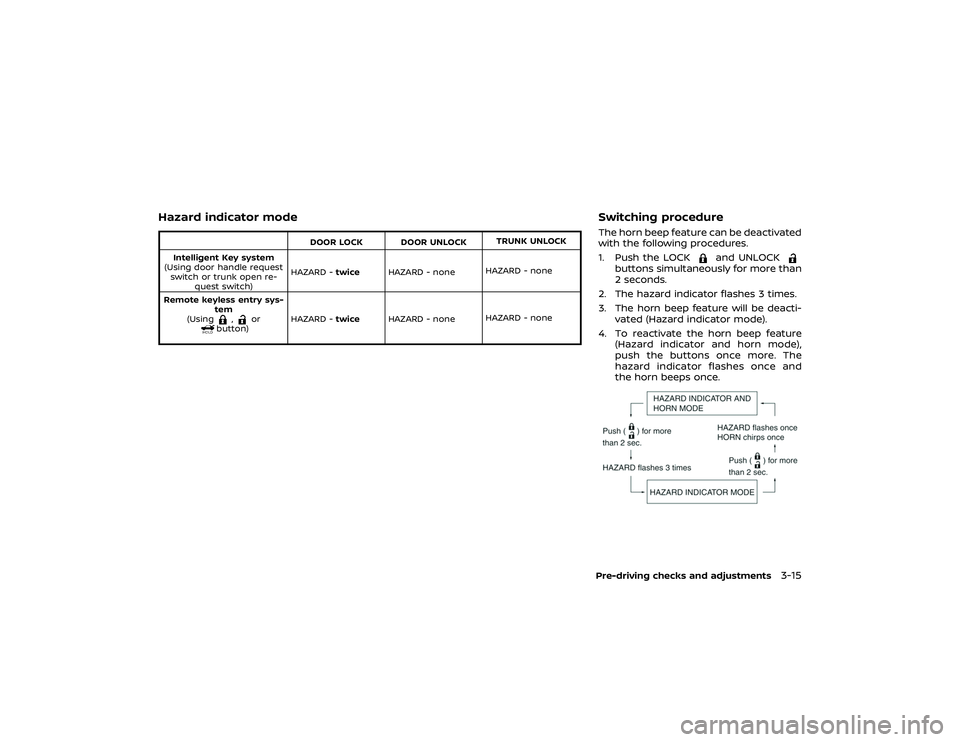
to
position before the vehicle stops, you may not be able
to shift gear or it may take longer to shift gear. Make sure to depress the brake pedal and check that the vehicle has
stopped before shifting.
Multiple-disc wet
clutch
.
When stopping the vehicle with the shift lever in the
orposition. Move the shift lever after turning off the system check
display. Also, it is normal to hear clicking noises during the transmission systems check.
Changing modes
.
The higher shift speeds in the
position may result in shift shock and jerkiness when starting or shifting.
.
The quickest shifting in the R mode with the transmission in the
position is available when the engine speed is high.
However, the transmission may shift more slowly when the engine speed is low.
Mechanical Limited Slip
Differential (LSD) If the vehicle accelerates from a stop with the steering wheel turned half a turn in cold temperatures, the inner wheel tire
may slip and some noise or vibration may be heard. This phenomenon occurs because the viscosity of the differential oil
becomes thicker and the Limited Slip Differential (LSD) operates with increasing load. When the steering wheel is returned
to the straight ahead position or the differential oil warms up, the noise and vibration decrease.
Page 257 of 1808
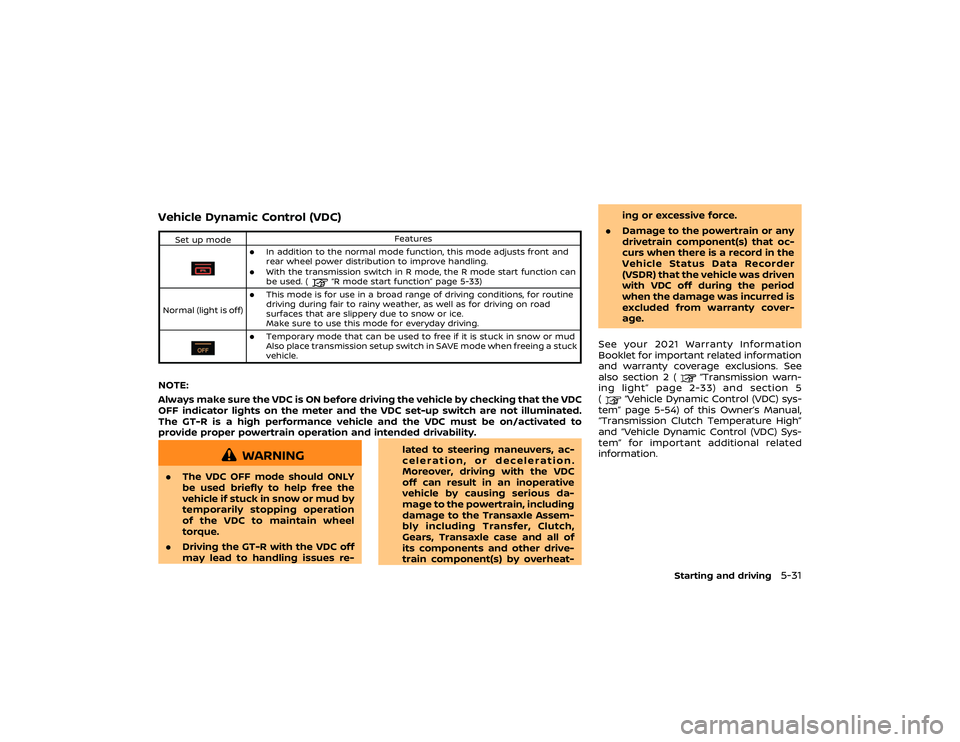
SUPPLEMENTAL AIR BAG WARNING
LIGHTThe supplemental air bag warning light,
displaying
in the meter, monitors the
circuits for the air bag systems, preten-
sioners and all related wirings.
When the ignition switch is in the ON
position, the supplemental air bag warn-
ing light illuminates for about 7 seconds
and then turns off. This means the SRS air
bag systems are operational.
If any of the following conditions occur,
the air bag and/or pretensioner systems
need servicing:
Page 266 of 1808
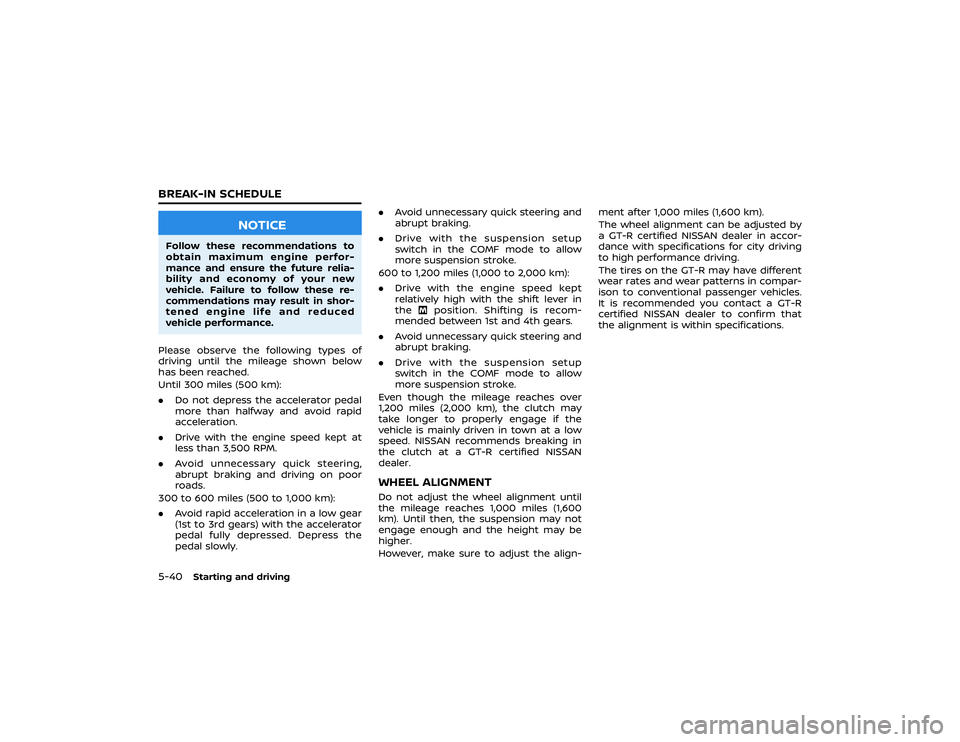
ODOMETER/TWIN TRIP OD-
OMETERThe odometer
indicates the total dis-
tance that the vehicle has been driven.
The twin trip odometer
indicates the
distance of individual trips.
Changing the displayPush the TRIP A/B RESET switch to
change between trips
and
.
Resetting the trip odometerTo reset a trip, display the trip that you
want to reset to zero, then push and hold
the TRIP A/B RESET switch for more than
Instruments and controls
2-7
Page 268 of 1808

NOTICE
If the gauge indicates engine coolant
temperature near the hot (H) end of
the normal range, reduce vehicle
speed to decrease temperature. If
gauge is over the normal range, stop
the vehicle as soon as safely possi-
ble. If the engine is overheated,
continued operation of the vehicle
may seriously damage the engine.
(
“If your vehicle overheats” page
6-8)
FUEL GAUGEThe gauge indicates the approximate
fuel level in the tank.
The gauge may move slightly during
braking, turning, acceleration, or going
up or down hills.
The gauge needle returns to E (Empty)
after the ignition switch is pushed to the
LOCK position.
Refill the fuel tank before the gauge
registers “E” (Empty).
The low fuel warning will be indicated on
the vehicle information display when the
fuel tank is getting low. Refuel as soon as
it is convenient, preferably before the gauge reaches “E”. There will be a small
reserve of fuel in the tank when the fuel
gauge needle reaches “E”. (
“Low fuel
warning” page 2-43)
The
indicates that the fuel-filler door
is located on the passenger’s side of the
vehicle. (
“Fuel-filler door” page 3-24)
NOTE:
If the vehicle runs out of fuel, the
Malfunction Indicator Light (MIL) may
come on. Refuel as soon as possible.
After a few driving trips, the
light
should turn off. If the light remains on
after a few driving trips, it is recom-
mended you have the vehicle inspected
by a GT-R certified NISSAN dealer.
(
“Malfunction Indicator Light (MIL)”
page 2-32)
Instruments and controls
2-9